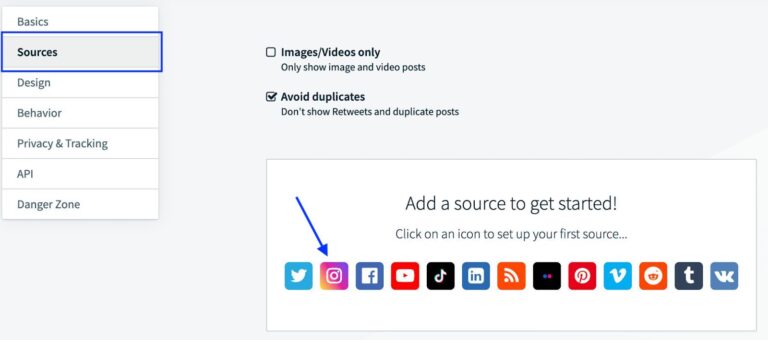If you are seeking to enhance the speed and performance of your WordPress site, a comprehensive analysis of the top caching plugins is provided in this document. The featured plugins include W3 Total Cache, WP Super Cache, WP Rocket, WP Fastest Cache, and LiteSpeed Cache.
Additionally, guidance on selecting the most suitable caching plugin for your website and detailed instructions on the installation and configuration process will be outlined.
Through the utilization of these caching plugins, essential insights and strategies for optimizing the speed and performance of your site will be imparted. Let us commence with this endeavor.
Top WordPress Caching Plugins for Site Speed and Performance

Enhancing the performance and speed of a WordPress site necessitates the utilization of caching plugins. The following are the foremost WordPress caching plugins that can substantially enhance the speed and overall performance of a site.
- WP Rocket distinguishes itself among these plugins due to its intuitive interface and robust caching functionalities. It provides features such as page caching, cache preloading, lazy loading for images, and database optimization.
- W3 Total Cache is another widely recognized option, acknowledged for its comprehensive caching solutions encompassing browser caching, object caching, and minification.
- WP Super Cache, characterized by its straightforward setup process and efficient caching mechanism, is deemed a dependable choice.
Each of these plugins plays a crucial role in accelerating the speed of a WordPress site, diminishing server load, and enhancing the overall user experience.
1. W3 Total Cache
W3 Total Cache serves as a comprehensive caching solution tailored for WordPress sites, offering a diverse array of caching options aimed at efficiently managing website caching. This WordPress plugin plays a crucial role in optimizing page load times, implementing browser caching, and enhancing server response times.
The utilization of W3 Total Cache presents website owners with the opportunity to notably elevate the speed and performance of their WordPress websites. By capitalizing on various cachin g mechanisms like page caching, object caching, and database caching, this plugin effectively stores frequently accessed data, thereby diminishing the necessity for repetitive data processing.
Furthermore, through its capability to minify HTML, CSS, and JavaScript files, W3 Total Cache significantly reduces the size of these resources, culminating in expedited loading times and an enhanced user experience. Noteworthy is the plugin’s support for content delivery network (CDN) integration, facilitating the geographic distribution of web content in closer proximity to users for swifter delivery.
2. WP Super Cache
WP Super Cache is a widely recognized WordPress caching plugin renowned for its efficient caching features, which afford users precise control over website caching, page caching, and browser caching. This plugin is instrumental in optimizing server response times and overall performance.
Employing a variety of caching mechanisms such as mod_rewrite, PHP caching, and legacy caching, the plugin rapidly generates static HTML files. Users can easily navigate cache settings through its user-friendly interface, enabling them to customize caching behavior to suit their individual requirements. By diminishing the server load and reducing database queries, WP Super Cache significantly enhances site speed, resulting in an improved user experience and heightened SEO performance. The plugin’s performance optimizations establish it as an invaluable asset for any WordPress website striving for exceptional speed and efficiency.
3. WP Rocket
WP Rocket is notably distinguished as one of the premier caching plugins for WordPress, attributed to its advanced caching options, efficient cache control functionalities, and seamless website caching mechanisms. The plugin excels in optimizing page load times and enhancing server response times.
Through WP Rocket, individuals have the capability to easily fine-tune cache settings, such as specifying which pages to exclude from caching or leveraging browser caching for heightened performance. The plugin’s user-friendly interface facilitates swift configuration, rendering it accessible even to users with limited technical proficiency. By activating features such as minification and lazy loading, WP Rocket effectively diminishes the size of web files and defers the loading of images, thereby contributing to an expedited browsing experience for visitors. The plugin’s compatibility with prominent e-commerce platforms and multilingual websites further underscores its versatility and efficacy in accelerating website speed.
4. WP Fastest Cache
The WP Fastest Cache plugin is recognized as a dependable caching solution for WordPress websites, offering effective caching options, precise cache control features, and seamless website caching functionalities. It plays a crucial role in enhancing page load times and optimizing server response times.
WP Fastest Cache’s cache control options enable users to easily manage cached content, schedule cache clearance, and exclude specific pages from caching. This level of control ensures that websites can deliver current content while benefiting from accelerated loading speeds. The plugin’s website caching mechanisms efficiently store static versions of web pages, thus decreasing server load and providing visitors with a smoother browsing experience. By significantly improving performance through cache optimization, WP Fastest Cache contributes to WordPress sites achieving higher rankings in search engine results and enhancing overall user satisfaction.
5. LiteSpeed Cache
LiteSpeed Cache represents a potent caching plugin tailored for WordPress, characterized by an array of caching options, robust cache control functionalities, and efficient website caching mechanisms. This plugin excels in optimizing page load times and enhancing server response times.
LiteSpeed Cache boasts a user-friendly interface that enables users to readily customize cache settings according to their website’s specific requirements. Through its advanced cache purging capabilities, it ensures the delivery of the most current content to visitors at all times. Moreover, LiteSpeed Cache seamlessly integrates with prominent content delivery networks (CDNs), thereby augmenting website performance by efficiently distributing content across multiple servers. Websites leveraging LiteSpeed Cache typically witness substantial enhancements in loading speed and overall performance, consequently fostering an enriched user experience and heightened engagement levels.
How to Choose the Right WordPress Caching Plugin for Your Site?
Choosing the optimal caching plugin for a WordPress site is essential for the enhancement of website performance, acceleration of speed, and overall efficiency. It is advisable to take into account various factors such as cache configuration, website loading speed, and the specific caching solutions that each plugin offers.
During the evaluation of different caching plugins, it is crucial to consider their compatibility with the particular WordPress theme and plugins being utilized, as this factor can significantly influence the effectiveness of the caching features when working together. It is recommended to seek out plugins that feature user-friendly interfaces and straightforward settings to streamline the caching process. Additionally, the level of support and documentation provided by the plugin should be carefully considered, as dependable customer support and comprehensive guidance can be invaluable in the setup and troubleshooting of caching issues. Prioritizing plugins that offer regular updates is imperative to ensure consistent compatibility and optimization for the website.
How to Install and Configure a WordPress Caching Plugin?
The process of installing and configuring a WordPress caching plugin involves a series of steps aimed at enhancing the performance of a website through efficient caching mechanisms. To optimize your site’s performance effectively, it is essential to follow the guidelines outlined below.
To begin, it is imperative to select a suitable caching plugin from reputable sources such as WP Rocket, W3 Total Cache, or WP Super Cache based on the specific needs of your website. Once a plugin has been chosen, the following steps should be taken:
- Access your WordPress dashboard after selecting the desired plugin.
- Navigate to the ‘Plugins’ section and proceed to select ‘Add New’.
- Search for the chosen plugin, then click on ‘Install Now’ followed by ‘Activate’ to enable it on your site.
- Customize the cache configurations by accessing the plugin settings to align them with your site’s requirements. This may involve enabling features like page caching, browser caching, and minification to ensure optimal performance of the website.
1. W3 Total Cache
To set up and configure W3 Total Cache for a WordPress website, the initial step is to install the plugin from the WordPress repository. Subsequently, the user should proceed with configuring cache settings and monitoring performance metrics to ensure the optimal functionality of caching.
Upon successful installation of the plugin, the user can access the settings through the WordPress dashboard. Within the dashboard, the user should navigate to the ‘Performance‘ tab and begin customizing the cache settings based on the specific requirements of the website. Features such as page cache, object cache, browser cache, and others can be enabled to enhance overall performance. It is imperative to adjust minify settings for CSS, JavaScript, and HTML to improve load times. Additionally, it is recommended to regularly monitor the performance metrics provided by the plugin to assess how caching is influencing the speed of the website and make any necessary modifications for optimal outcomes.
2. WP Super Cache
Commence by implementing WP Super Cache on the WordPress site to utilize its caching capabilities effectively. Configure the plugin settings to enhance caching efficiency and bolster site performance through proficient cache management.
Upon the installation of the plugin, proceed to the settings page to tailor the cache configurations to your preferences. Depending on your technical proficiency, you have the option to select between simple and expert modes.
Within the advanced settings, you can define specific areas of your site to cache, establish expiry times for cached content, and enable compression to further optimize loading speeds. It is imperative to experiment with various configurations to identify the most suitable settings for your website’s distinctive requirements.
Bear in mind that consistent monitoring and adjustment of your cache settings are vital for upholding a swift and dependable website.
3. WP Rocket
When setting up WP Rocket for a WordPress site, it is important to ensure a seamless installation process by carefully following the provided installation guidelines. It is recommended to configure cache settings according to the specified options to optimize caching performance and adhere to the best cache practices.
These settings play a critical role in improving the loading speed of the website, enhancing the user experience, and boosting SEO rankings. By implementing browser caching, visitors’ browsers can store static resources, thereby reducing server load and speeding up page load times.
Utilizing WP Rocket’s advanced features such as Minification and Concatenation allows for the compression and combination of CSS and JavaScript files, further enhancing the performance of the website. Additionally, enabling LazyLoad to defer offscreen images and videos ensures that they are only loaded when users scroll, conserving bandwidth and expediting the initial page loading process.
4. WP Fastest Cache
To leverage the advantages of WP Fastest Cache for a WordPress site, the initial step involves the installation of the plugin followed by the configuration of the cache. It is essential to tailor the cache settings to enhance performance and capitalize on the advantages presented by efficient caching mechanisms.
Upon its installation, WP Fastest Cache provides a user-friendly interface that streamlines the process of establishing caching for the website. Through the utilization of its functionalities, there is a substantial reduction in page load durations and an improvement in user experience. The configuration of cache settings, such as the activation of file minification, browser caching, and Gzip compression, can further elevate the speed of the site. Regularly clearing the cache and arranging automatic cache expiration are measures that guarantee the continuous delivery of content with minimal loading times.
By adhering to these procedures, the WordPress site can operate optimally, offering visitors a seamless browsing experience.
5. LiteSpeed Cache

When incorporating LiteSpeed Cache as the caching solution for a WordPress website, the initial step is to begin with the installation of the plugin. Subsequently, proceed to configure the cache settings in order to leverage a performance advantage. It is advisable to thoroughly explore the benefits associated with LiteSpeed Cache for the purpose of optimizing the efficiency of the website.
LiteSpeed Cache presents a multitude of advantages aimed at enhancing the speed and overall performance of a WordPress website. Through the utilization of its robust caching mechanism, notable improvements can be observed in terms of reduced loading times, enhanced server response times, and an overall improved user experience.
To maximize the advantages offered by LiteSpeed Cache, it is recommended to delve into the cache settings accessible through the plugin dashboard. Within this interface, users can make fine adjustments to a variety of configurations including cache expiration time, browser cache expiration, and object cache. This meticulous optimization ensures that the website operates seamlessly and efficiently, providing an enhanced user experience.
Tips for Optimizing Site Speed and Performance with Caching Plugins
Enhancing the speed and performance of a website through caching plugins involves the implementation of various optimization strategies. By adhering to the following recommendations, one can effectively improve cache efficiency, capitalize on the advantages of caching, and mitigate potential shortcomings to optimize the overall performance of the website.
A fundamental strategy in ensuring cache efficiency is to configure caching plugins to exclusively cache static content that undergoes infrequent changes, such as images, CSS, and JavaScript files. Regularly clearing outdated or superfluous cached data is essential to prevent the delivery of obsolete content to site visitors. While caching offers notable enhancements in speed and performance, it is imperative to remain cognizant of potential drawbacks, such as the delivery of outdated content to users.
To address this issue, it is advisable to establish appropriate expiration times for cached content and prioritize dynamic content that necessitates frequent updates over static content.
1. Enable Gzip Compression
Implementation of Gzip compression can significantly optimize the performance of a website by diminishing file sizes and enhancing data transfer rates. It is advisable to conduct performance evaluations both before and after the incorporation of Gzip compression to assess the impact on the website’s functionality.
Gzip compression functions by compressing web files like HTML, CSS, and JavaScript before transmitting them to the user’s browser, effectively reducing the overall size of these files. This reduction in file size not only accelerates data transfer processes but also contributes to expeditious loading times for the website, thereby enhancing user experience.
Enabling Gzip compression is a relatively straightforward process; for instance, on Apache servers, it can be activated by appending a few lines of code to the .htaccess file. The execution of performance tests is essential to validate the enhancements facilitated by Gzip compression, ensuring the efficacy of optimization endeavors.
2. Minify CSS, JavaScript, and HTML
Minifying CSS, JavaScript, and HTML files is a crucial practice aimed at reducing file sizes and enhancing load times. The implementation of code minification techniques is imperative for optimizing site performance and achieving substantial enhancements in speed and responsiveness.
Minified files contribute to expedited downloads, reduced bandwidth consumption, and ultimately, an enhanced user experience. By eliminating superfluous spaces, line breaks, and comments, file sizes can be markedly decreased, enabling web pages to load promptly and operate more effectively. Tools such as UglifyJS, YUI Compressor, and HTMLMinifier can be utilized to automate the minification process.
It is important to bear in mind the necessity of creating backups prior to minifying code, as improper execution can potentially lead to issues. Regular monitoring and periodic minification of code are essential practices for preserving optimal website performance.
3. Utilize Browser Caching
Employing browser caching strategies can be a valuable tool in enhancing website performance and alleviating server load. Techniques such as cache expiration, preloading, and dynamic/static caching can be implemented to optimize site speed, resulting in expedited page load times.
Effective utilization of browser caching has the potential to substantially improve user experience by reducing page load times. Cache expiration ensures that stored data remains current, allowing visitors to access the most up-to-date content. Preloading methods help enhance speed by fetching resources in advance, ready for immediate display upon user request. Dynamic caching generates content dynamically, tailoring it to individual users, while static caching retains prebuilt copies for swift retrieval. When employed collectively, these techniques can lead to a more seamless browsing experience, enhancing website responsiveness and user engagement.
4. Optimize Images
It is imperative to optimize images to reduce page load times and enhance overall website performance. Employing image optimization techniques can effectively minimize file sizes, improve resource utilization, and enable the monitoring of performance metrics for optimized image delivery.
Image optimization plays a crucial role in accelerating site speed by decreasing the duration required for web pages to load. By compressing images to smaller file sizes without compromising quality, user experience can be significantly improved through quicker load times. Monitoring performance metrics such as page load time and server response time facilitates tracking the impact of optimized images on overall website performance. Ultimately, optimized images contribute to enhanced resource efficiency and allow websites to deliver content more promptly and efficiently to users.
5. Use a Content Delivery Network (CDN)
The strategic integration of a Content Delivery Network (CDN) with a WordPress site can greatly enhance website responsiveness and improve the global delivery of content. It is essential to configure CDN settings effectively in order to capitalize on cache benefits and optimize content distribution.
When utilizing a CDN, the reduction of latency is significant as content is delivered from servers in closer proximity to the user’s location, resulting in accelerated website loading times. The benefits of CDN integration extend to effectively managing sudden spikes in traffic, ensuring consistent performance even during peak periods. CDNs also aid in load balancing by distributing traffic across servers to prevent overload and maintain site reliability. Proper optimization of cache settings on the CDN can lead to expedited retrieval of frequently accessed content, thereby enhancing user experience and overall site performance.
Frequently Asked Questions
What is caching and why is it important for WordPress site speed and performance?
Caching is the process of temporarily storing frequently accessed data or content in order to reduce load times and improve website performance. In the case of WordPress sites, caching plugins can significantly improve site speed by reducing the amount of time it takes to load pages and content.
How do caching plugins optimize site speed and performance on WordPress sites?
Caching plugins work by creating static versions of your website’s pages and content, which can then be served to visitors more quickly than if the server had to retrieve the information from scratch. This reduces server load and improves page load times, resulting in a faster and more responsive website.
What are some of the best WordPress caching plugins available?
There are several highly recommended caching plugins for WordPress, including W3 Total Cache, WP Super Cache, and WP Rocket. Each of these plugins offers its own unique features and benefits, so it’s important to research and test them to find the best fit for your specific website needs.
Do caching plugins work for all types of websites and hosting providers?
Yes, caching plugins can be used on various types of websites, including e-commerce, blogs, and business sites, and are compatible with most hosting providers. However, it’s always a good idea to check with your hosting provider to ensure they do not have any specific caching restrictions or recommendations.
Are there any potential drawbacks to using caching plugins on WordPress sites?
While caching can greatly improve site speed and performance, there are some potential drawbacks to consider. Caching plugins may cause conflicts with other plugins or themes, and they may also require some technical knowledge to properly configure and maintain. It’s important to regularly monitor and test your site after implementing a caching plugin to ensure it is functioning as intended.
How often should I clear my cache when using a caching plugin?
This can vary depending on the amount of content on your site and how frequently it is updated. Some caching plugins offer features to automatically clear the cache at certain intervals or when changes are made to your site. It’s also recommended to manually clear the cache when making significant changes or updates to your site to ensure visitors are seeing the most up-to-date version.




